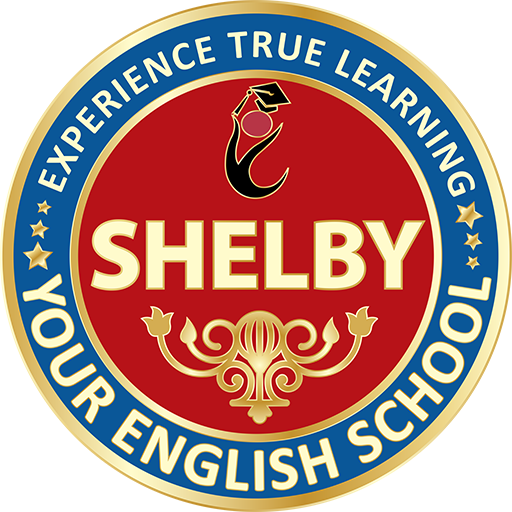Teach Blending and Segmenting in Phonics
Teach Blending and Segmenting in Phonics Blending and segmenting are two fundamental skills in phonics that help children decode and spell words efficiently. These skills form the building blocks of early reading and writing, enabling children to connect sounds and form meaningful words. Blending involves smoothly combining individual sounds to pronounce a word, while segmenting is the ability to break a word into its individual sounds. Mastering both skills is essential for fluency and comprehension. In this blog, we will explore effective techniques, activities, and strategies to teach blending and segmenting, making phonics learning more interactive and enjoyable for young learners. Understanding Blending and Segmenting in Phonics What is Blending? Blending is the process of combining individual phonemes (sounds) to form a complete word. For example, the sounds /c/ /a/ /t/ blend together to make the word “cat.” This skill helps children transition from recognizing letter sounds to reading full words fluently. Without blending, reading words becomes difficult, as children may struggle to connect sounds smoothly. Encouraging young readers to say each sound and gradually blend them helps in building their fluency. What is Segmenting? Segmenting is the opposite of blending. It involves breaking down a word into its individual sounds. For example, the word “dog” can be segmented into /d/ /o/ /g/. Segmenting is crucial for spelling and writing, as it helps children identify the sounds within a word. When children can segment words accurately, they develop stronger spelling skills. Teaching segmenting systematically allows young learners to gain confidence in their ability to decode and construct words. Why are These Skills Important? Blending and segmenting are essential for reading fluency and comprehension. These skills help children recognize patterns in words, making it easier to decode new vocabulary. Strong blending skills enable smooth reading, reducing the tendency to sound out every letter separately. Similarly, segmenting strengthens spelling abilities by allowing children to identify and manipulate sounds. By mastering these skills, young learners build a solid foundation for literacy development. Techniques for Teaching Blending in Phonics Sound-by-Sound Blending Sound-by-sound blending involves slowly pronouncing each phoneme and gradually connecting them. For example, when teaching the word “sun,” students first say /s/, then /u/, then /n/, and finally blend them together. This technique helps children develop an awareness of how sounds combine to form words. Using visual aids like letter cards enhances understanding. Continuous Blending Continuous blending requires stretching out the sounds without pauses. For example, instead of saying /b/ – /a/ – /t/ separately, children would say “baaat” and then adjust to “bat.” This technique reduces the tendency to break words into disconnected sounds, promoting smoother reading. Practicing with common CVC (consonant-vowel-consonant) words strengthens fluency. Cumulative Blending Cumulative blending involves adding one sound at a time to a word. For example, when blending “stop,” children first say /s/, then /st/, then /sto/, and finally “stop.” This method is useful for longer words and helps children decode more complex vocabulary. Using word-building activities enhances engagement. Techniques for Teaching Segmenting in Phonics Tapping Out Sounds Tapping out sounds is a hands-on way to help children segment words. For example, when spelling “map,” students tap their fingers for each sound: /m/ (tap), /a/ (tap), /p/ (tap). This method strengthens phonemic awareness and spelling skills. It also reinforces auditory learning. Using Elkonin Boxes Elkonin boxes are a visual tool that helps children break words into phonemes. Each box represents a sound in the word. For example, for “fish,” students place a counter in a box as they say /f/, /i/, /sh/. This technique improves sound segmentation and spelling accuracy. Using colored tokens adds an element of fun. Word Stretching Word stretching helps children hear each individual sound by elongating the pronunciation. For example, saying “sssuuunnn” helps in identifying /s/, /u/, and /n/. Encouraging students to “stretch” words with their voices enhances their ability to break down sounds. Pairing this with writing activities reinforces learning. Fun Activities for Teaching Blending and Segmenting Blending Bingo Blending Bingo is a fun game where children listen to a word in segmented form and mark the correct word on their bingo cards. For example, the teacher says /d/ /o/ /g/, and students find “dog” on their card. This game reinforces blending skills in an engaging way. Segmenting Scavenger Hunt In this activity, children search for objects in the classroom and segment their names. For example, if they find a “pen,” they say /p/ /e/ /n/. This hands-on approach makes phonics learning more interactive and enjoyable. Adding a timer can create excitement. Sound Hopscotch Sound Hopscotch involves drawing a hopscotch grid with letters or phonemes. Children hop on the squares and blend the sounds together to form a word. This movement-based activity enhances phonics learning while keeping children physically active. Common Challenges and Solutions in Teaching Blending and Segmenting Difficulty in Connecting Sounds Some children struggle to blend sounds smoothly. To address this, start with easier words and model blending clearly. Encourage children to use their fingers to track sounds visually. Patience and repeated practice help overcome this challenge. Confusion Between Similar Sounds Children may confuse sounds like /b/ and /d/ or /p/ and /q/. Using visual aids, such as letter cues, can clarify differences. Playing auditory discrimination games helps reinforce distinct phonemes. Struggles with Spelling During Segmenting Segmenting can be challenging for spelling, especially for words with silent letters. Encourage students to sound out each letter before writing. Teaching spelling patterns and word families simplifies the process. Conclusion Blending and segmenting are crucial phonics skills that lay the foundation for reading and writing. By using engaging techniques like sound-by-sound blending, Elkonin boxes, and interactive games, educators can make phonics instruction effective and enjoyable. Overcoming challenges through consistent practice and support ensures that children develop fluency and confidence in reading. With the right strategies, every child can master these essential skills and become a proficient reader. Start incorporating these methods today and watch young learners thrive in their phonics journey! https://youtu.be/bXFgneY_uAA Facebook Youtube X-twitter Whatsapp Linkedin Instagram Section Title Teach Blending
- Shelby Academy
- 0 Comments
- February 27, 2025
Unlock Phonics for Early Reading Success
Unlock Phonics for Early Reading Success Phonics is a foundational skill that helps young children learn to read by connecting letters with their sounds. Mastering phonics allows kids to decode words, improve pronunciation, and develop strong reading skills. Early exposure to phonics helps children build confidence in reading and sets them up for academic success. Understanding how phonics works and using the right strategies can make learning to read a fun and engaging experience for kids. In this blog, we will explore the importance of phonics, effective teaching methods, and activities to help children become confident readers. Why Phonics is Essential for Early Reading Helps Kids Decode Words Easily Phonics teaches children how to break words into smaller sound units, making it easier for them to read unfamiliar words. Instead of memorizing words by sight, kids learn patterns that help them decode new words. This strategy builds a strong reading foundation and boosts confidence. Improves Spelling and Pronunciation When children understand letter-sound relationships, they can spell words more accurately. Phonics helps them recognize how different letter combinations create sounds, leading to better pronunciation. With practice, they learn to read fluently and articulate words correctly. Boosts Reading Comprehension Reading becomes more enjoyable when children can easily recognize words and understand their meanings. Phonics helps kids focus on comprehension rather than struggling to decode words. As their reading skills improve, they develop a love for books and learning. Key Phonics Concepts for Beginners Letter-Sound Relationships The first step in phonics is understanding that each letter represents a specific sound. Teaching kids the sounds of individual letters helps them form the foundation for reading. For example, ‘B’ makes the /b/ sound, and ‘C’ makes the /k/ sound. Blending Sounds to Form Words Blending is the process of combining individual letter sounds to create words. For instance, the sounds /c/, /a/, and /t/ blend to form “cat.” Teaching kids to blend sounds smoothly helps them read fluently. Recognizing Word Families and Patterns Phonics also involves learning common word families, such as “-at” (cat, bat, hat) and “-ig” (pig, big, dig). Recognizing patterns helps kids read multiple words quickly and enhances their reading speed. Effective Strategies to Teach Phonics Use Multi-Sensory Techniques Children learn better when they engage multiple senses. Activities like tracing letters in sand, using flashcards, or singing phonics songs make learning interactive. Multi-sensory techniques help children remember sounds and letters more effectively. Introduce Phonics Through Storytelling Using stories that emphasize phonics sounds helps kids connect sounds to real words. Reading simple books that highlight specific phonics patterns reinforces learning. This approach makes phonics fun and meaningful. Practice with Games and Activities Interactive games, such as phonics puzzles and word-building exercises, make learning enjoyable. Games keep kids engaged and motivated while reinforcing phonics concepts in a playful way. Fun Phonics Activities for Kids https://www.youtube.com/watch?v=3pDSo0wl7vw&pp=ygUfRnVuIFBob25pY3MgQWN0aXZpdGllcyBmb3IgS2lkcw%3D%3D Letter Sound Hunt Place objects around the room that start with different letters and have kids find them. For example, they can pick up a “ball” for the letter B. This activity reinforces letter-sound recognition. Word Building with Letter Cards Give kids letter cards and ask them to arrange them to form words. For example, they can use “C,” “A,” and “T” to build “cat.” This hands-on activity strengthens blending skills. Rhyming Word Challenge Encourage kids to come up with as many rhyming words as possible. For example, start with “dog” and have them say words like “log” and “fog.” This activity enhances their ability to recognize word patterns. Tips for Parents and Teachers to Support Phonics Learning Read with Your Child Every Day Reading together helps kids see phonics in action. Pointing to words as you read and emphasizing sounds makes phonics learning more effective. Consistent reading time strengthens their reading skills. Be Patient and Encouraging Learning phonics takes time, so it’s important to be patient. Encouraging kids when they struggle builds their confidence. Praise their efforts and celebrate their progress to keep them motivated. Create a Print-Rich Environment Surround kids with books, labels, and posters that display letters and words. Seeing written language every day helps reinforce phonics concepts and encourages reading practice. Conclusion Phonics is a powerful tool that helps children unlock the world of reading. By understanding letter-sound relationships, blending sounds, and practicing with engaging activities, kids can develop strong reading skills. With the right support from parents and teachers, phonics learning can be enjoyable and effective. Start using these strategies today to help your child achieve early reading success! https://youtu.be/bXFgneY_uAA Facebook Youtube X-twitter Whatsapp Linkedin Instagram Section Title Unlock Phonics for Early Reading Success ByPriya February 26, 2025 Communication Skills,Conversation Skills Unlock Phonics for Early Reading Success Phonics is a foundational skill that helps young children… Read More Build Confidence in Kids’ Public Speaking ByPriya February 26, 2025 Communication Skills,Conversation Skills Build Confidence in Kids’ Public Speaking Public speaking is an essential skill that helps children… Read More Conversation Starters for Kids’ English ByPriya February 25, 2025 Communication Skills,Conversation Skills,Spoken English Conversation Starters for Kids’ English Helping kids improve their English-speaking skills can be… Read More Role-Playing to Teach Kids English Speaking ByPriya February 25, 2025 Communication Skills,Conversation Skills,Spoken English Role-Playing to Teach Kids English Speaking Teaching kids English through role-playing is an… Read More Use Storytelling to Improve Kids’ English ByPriya February 25, 2025 Communication Skills,Conversation Skills,Spoken English Use Storytelling to Improve Kids’ English Storytelling is one of the most effective ways to teach… Read More Interactive English Activities for Kids ByPriya February 25, 2025 Communication Skills,Conversation Skills,Spoken English Interactive English Activities for Kids Learning English can be exciting when taught through… Read More Games to Boost Kids’ English Speaking Skills ByPriya February 25, 2025 Communication Skills,Conversation Skills,Spoken English Games to Boost Kids’ English Speaking Skills Children learn best when they are engaged in fun and… Read More Encourage Kids to Speak English Confidently ByPriya February 24, 2025 Communication Skills,Conversation Skills,Spoken English Encourage Kids to Speak English Confidently Helping kids gain confidence in speaking English is one… Read More 5 Tips to
- Shelby Academy
- 0 Comments
- February 26, 2025


